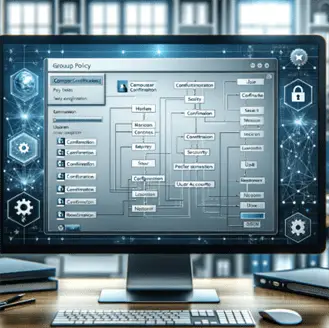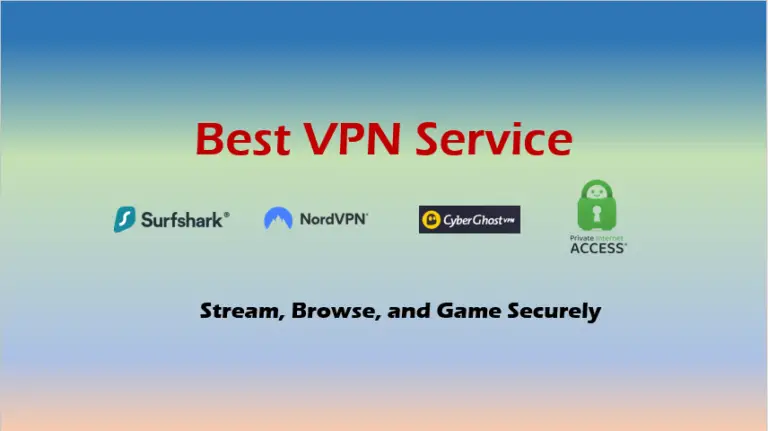Understanding Group Policy Objects (GPOs) for Effective Data Security
Discover how Group Policy Objects can enhance security, boost productivity, and simplify IT management. Dive into this ultimate guide for IT professionals.
Introduction: Unlocking the Power of Group Policy Objects
In today’s complex IT environments, managing and securing Windows networks efficiently is a top priority for system administrators. Enter Group Policy Objects (GPOs) – a powerful tool in the Windows ecosystem that can revolutionize how you manage your organization’s IT infrastructure. Whether you’re a seasoned IT professional or just starting your journey in network administration, understanding GPOs is crucial for maintaining a secure, efficient, and well-organized Windows environment.
This comprehensive guide will take you on a deep dive into the world of Group Policy Objects. We’ll explore what GPOs are, how they work, and why they’re an indispensable tool for IT administrators. From basic concepts to advanced techniques, we’ll cover everything you need to know to harness the full potential of GPOs in your organization.
So, buckle up and get ready to master the art of Group Policy Objects. By the end of this guide, you’ll have the knowledge and confidence to implement GPOs effectively, enhancing your organization’s security posture and streamlining your IT management processes.
What are Group Policy Objects (GPOs)?
Group Policy Objects are a cornerstone of Windows network management. But what exactly are they? Let’s break it down:
Definition of Group Policy Objects
Group Policy Objects (GPOs) are collections of settings that define how a system should be configured for a group of users or computers within an Active Directory environment. They are virtual containers that store configuration settings applied to users and computers in an organization.

The Role of GPOs in Windows Environments
GPOs play a crucial role in:
- Centralized Management: They allow administrators to manage and configure settings from a central location.
- Policy Enforcement: GPOs ensure that policies are consistently applied across the organization.
- Security Enhancement: By applying uniform security settings, GPOs help protect against unauthorized access and other security threats.
- User Experience Standardization: They help create a consistent user experience across the organization.
Components of a Group Policy Object
A GPO consists of two main parts:
- Group Policy Container (GPC): This is stored in Active Directory and contains the GPO’s properties and other AD-specific information.
- Group Policy Template (GPT): This is stored in the SYSVOL folder on domain controllers and contains the actual settings, including administrative template-based policy settings, security settings, and software installation information.
How to Configure GPOs in Active Directory
Now that we understand what GPOs are, let’s dive into how to configure them:
Step 1: Open Group Policy Management Console (GPMC)
The GPMC is your central hub for managing GPOs. To access it:
- Open the Start menu and search for “Group Policy Management”
- Alternatively, you can run
gpmc.mscfrom the Run dialog (Windows Key + R)
Step 2: Create a New GPO
To create a new GPO:
- Right-click on the desired Organizational Unit (OU), site, or domain in the GPMC
- Select “Create a GPO in this domain, and Link it here”
- Give your GPO a descriptive name that clearly indicates its purpose
Step 3: Edit the GPO
Once created, you need to configure the settings within the GPO:
- Right-click on the newly created GPO and select “Edit”
- This will open the Group Policy Management Editor
- Navigate through the tree structure to find the settings you want to configure
- Settings are divided into two main sections:
- Computer Configuration: for settings that apply to computers
- User Configuration: for settings that apply to users
Step 4: Link the GPO
After configuring the settings:
- Ensure the GPO is linked to the appropriate Active Directory containers (OUs, sites, or domains)
- You can link a GPO to multiple containers if needed
Step 5: Configure GPO Scope
To refine who the GPO applies to:
- Use Security Filtering to apply the GPO only to specific users, groups, or computers
- Consider using WMI Filtering for more advanced targeting based on system attributes
Step 6: Test and Deploy
Before wide-scale deployment:
- Test the GPO on a small group of users or computers
- Use Group Policy Modeling and Group Policy Results to verify the expected outcome
- Once satisfied, deploy the GPO to your production environment
Benefits of Using Group Policy Objects (GPOs)
Implementing GPOs in your organization offers numerous advantages:
- Centralized Management: Manage settings for multiple users and computers from a single location.
- Enhanced Security: Apply consistent security settings across your network to protect against threats.
- Improved Productivity: Automate configurations and updates, reducing downtime and manual interventions.
- Policy Enforcement: Ensure compliance with organizational standards and industry regulations.
- Scalability: Apply policies to individual users, groups, or entire domains, accommodating organizations of all sizes.
- Reduced Administrative Overhead: Automate repetitive tasks and reduce the need for manual configurations.
- Consistent User Experience: Provide a standardized environment for all users, improving efficiency and reducing support calls.
- Flexible Application: Apply different policies to different groups of users or computers based on their roles or requirements.
Best Practices for Managing GPOs
To get the most out of Group Policy Objects, follow these best practices:
- Plan and Document: Before creating GPOs, plan your policy structure and document your policies for future reference.
- Use Descriptive Names: Give each GPO a clear, descriptive name that indicates its purpose and scope.
- Limit GPO Count: Keep the number of GPOs manageable. Consolidate settings into fewer GPOs where possible to simplify management.
- Test Before Deployment: Always test GPOs in a controlled environment before applying them network-wide.
- Regular Review and Update: Periodically review and update your GPOs to ensure they remain relevant and effective.
- Use Security Filtering: Apply GPOs only to the necessary users or computers using security filtering to minimize impact.
- Leverage GPO Modeling: Use Group Policy Modeling to predict the effects of a GPO before applying it.
- Monitor GPO Performance: Keep an eye on GPO processing times to ensure they don’t negatively impact logon times or system performance.
- Use GPO Backup: Regularly back up your GPOs to protect against accidental changes or deletions.
- Implement Change Control: Use a change management process for GPO modifications to track changes and maintain stability.
Common Examples of GPOs
Here are some popular use cases for GPOs:
- Password Policies: Enforce strong password requirements across the organization.
- Software Deployment: Automate the installation and updating of software applications.
- Security Settings: Configure firewall rules, antivirus settings, and other security measures.
- User Environment: Set up standardized desktop settings, start menu configurations, and folder redirections.
- Device Restrictions: Control access to USB drives and other removable media to prevent data leaks.
- Printer Deployment: Automatically install and configure network printers for users.
- Power Management: Implement energy-saving policies by controlling power settings on computers.
- Internet Explorer Settings: Manage browser security settings and homepage configurations.
- Mapped Drives: Automatically map network drives for users based on their department or role.
- Startup and Shutdown Scripts: Execute scripts during computer startup or shutdown for maintenance tasks.
Understanding the Group Policy Editor

The Group Policy Editor is a crucial tool for configuring GPO settings. Here’s what you need to know:
Accessing the Group Policy Editor
- For local policies: Run
gpedit.mscfrom the Run dialog - For domain policies: Use the Group Policy Management Console (GPMC) and edit a specific GPO
Structure of the Group Policy Editor
The editor is divided into two main sections:
- Computer Configuration: Settings that apply to computer accounts
- User Configuration: Settings that apply to user accounts
Each section contains several key areas:
- Policies: Contains settings organized by Windows components and applications
- Preferences: Allows for more flexible configuration options
- Software Settings: Used for software deployment and maintenance
- Windows Settings: Includes security settings, scripts, and more
Tips for Using the Group Policy Editor
- Use the search function to quickly find specific settings
- Right-click on a setting to view explanations and supported versions
- Use the “Show Policies Only” option to filter out preferences
- Take advantage of the comments field to document your changes
Data Security and GPOs: A Critical Link
GPOs play a vital role in maintaining data security within an organization. Here’s how:
Implementing Security Policies
- Use GPOs to enforce password complexity, length, and expiration policies
- Configure account lockout policies to prevent brute-force attacks
- Implement BitLocker drive encryption settings for data protection
Access Control
- Use GPOs to restrict access to sensitive files and folders
- Configure User Rights Assignment to control who can perform specific actions
- Manage local and domain user accounts through GPOs
Audit and Compliance
- Set up auditing policies to track user activities and system changes
- Configure event log settings to ensure important security events are recorded
- Use GPOs to implement regulatory compliance settings (e.g., HIPAA, GDPR)
Network Security
- Configure Windows Firewall settings through GPOs
- Manage Windows Defender settings for consistent antivirus protection
- Control wireless network settings and VPN configurations
Application Control
- Use Software Restriction Policies or AppLocker to control which applications can run
- Manage browser security settings to protect against web-based threats
- Configure application-specific security settings (e.g., Microsoft Office macro settings)
By leveraging GPOs for these security aspects, organizations can significantly enhance their overall security posture and protect sensitive data from various threats.
Auditing Group Policy Settings for Compliance
Ensuring that your GPOs are compliant with organizational policies and industry regulations is crucial. Here’s how to effectively audit your Group Policy settings:
Enable Auditing
- Use GPOs to enable auditing of policy changes and access events
- Configure success and failure auditing for relevant security events
Review Audit Logs
- Regularly review Windows Event Logs for policy-related events
- Look for unauthorized changes or access attempts
Conduct Regular Audits
- Perform periodic reviews of all GPOs to ensure they align with current policies
- Verify that GPOs are still necessary and effective
Use Reporting Tools
- Leverage the built-in reporting capabilities of the Group Policy Management Console
- Consider third-party tools for more comprehensive GPO auditing and reporting
Implement Change Management
- Document all changes made to GPOs
- Use a formal change approval process for GPO modifications
Compliance Checks
- Regularly compare your GPO settings against compliance checklists
- Use compliance scanning tools to identify potential issues
Version Control
- Implement version control for your GPOs
- Keep a history of GPO changes for auditing purposes
By following these auditing practices, you can ensure that your GPOs remain compliant and effective in maintaining your organization’s security posture.
Limitations of Group Policy Objects
While GPOs are powerful tools, they do have some limitations to be aware of:
- Complexity: Managing a large number of GPOs can become complex and challenging to troubleshoot.
- Performance Impact: Poorly configured or excessive GPOs can impact system performance and login times.
- Limited Scope: GPOs are primarily designed for Windows environments and may not fully support other platforms.
- Dependency on Active Directory: GPOs require an Active Directory infrastructure to function fully.
- Replication Delays: Changes to GPOs may not apply immediately due to replication delays in large networks.
- Troubleshooting Difficulties: Identifying the source of policy-related issues can be time-consuming.
- Limited Granularity: Some settings may not offer the level of granularity required for specific configurations.
- Potential for Conflicts: Overlapping or conflicting GPOs can lead to unexpected behavior.
- Learning Curve: Effectively managing GPOs requires a significant investment in learning and experience.
- Version Compatibility: Some GPO settings may not be applicable to all Windows versions in a mixed environment.
Understanding these limitations helps administrators plan their GPO strategy more effectively and implement workarounds where necessary.
Troubleshooting Issues with GPOs
Even with careful planning, issues with GPOs can arise. Here are some troubleshooting steps to help resolve common problems:
1. Verify GPO Links
- Check that GPOs are linked to the correct OUs, sites, or domains
- Ensure that GPO links are enabled
2. Check Policy Processing Order
- Remember the LSDOU processing order: Local, Site, Domain, OU
- Use the Group Policy Results wizard to see which policies are being applied
3. Review Security Filtering
- Verify that the intended users and computers have the necessary permissions to apply the GPO
4. Use gpresult and RSoP
- Run
gpresult /ron affected machines to see applied policies - Use the Resultant Set of Policy (RSoP) tool for more detailed analysis
5. Check for WMI Filter Issues
- If using WMI filters, ensure they are correctly configured and not causing unintended filtering
6. Verify GPO Replication
- Check that GPOs are replicating correctly across domain controllers
- Use tools like
dcdiagto diagnose replication issues
7. Review Event Logs
- Check the Event Viewer for Group Policy-related events and errors
8. Test with gpupdate
- Use
gpupdate /forceto manually update Group Policy and observe the results
9. Isolate the Problem
- Try applying the GPO to a test OU or computer to isolate the issue
10. Check for Conflicting Settings
- Review all applied GPOs for potentially conflicting settings
By systematically working through these troubleshooting steps, you can identify and resolve most GPO-related issues efficiently.
Key Takeaways
As we wrap up our comprehensive guide to Group Policy Objects, let’s summarize the core tips:
- GPOs are powerful tools for centralized management of Windows environments.
- Proper planning and documentation are crucial for effective GPO implementation.
- Regular auditing and review of GPOs ensure ongoing compliance and effectiveness.
- Leveraging GPOs for security enhancement is a critical aspect of network protection.
- Understanding GPO limitations helps in planning workarounds and alternative solutions.
- Troubleshooting GPO issues requires a systematic approach and familiarity with diagnostic tools.
- Best practices like descriptive naming, testing, and limiting GPO count contribute to easier management.
- The Group Policy Editor is your primary interface for configuring GPO settings.
- GPOs play a vital role in enforcing data security policies across an organization.
- Continuous learning and staying updated on GPO features is essential for IT professionals.
Frequently Asked Questions (FAQ)
- Q: What is the difference between a GPO and a Group Policy?
A: A Group Policy is the overall concept of applying settings to groups of users or computers, while a GPO is the specific object that contains these settings. - Q: How often are Group Policy settings applied?
A: By default, computer policies are applied at startup and every 90 minutes, while user policies are applied at logon and every 90 minutes. - Q: Can GPOs be applied to non-Windows devices?
A: GPOs are primarily designed for Windows environments. While some settings may affect network interactions with non-Windows devices, direct application to these devices is limited. - Q: How do I prevent a specific GPO from applying to a particular group?
A: You can use security filtering to control which users or computers a GPO applies to by modifying the security settings of the GPO. - Q: What’s the difference between computer configuration and user configuration in a GPO?
A: Computer configuration settings apply to computer objects regardless of who logs in, while user configuration settings apply to user objects and follow the user across different computers. - Q: Can I use GPOs to deploy software?
A: Yes, GPOs can be used to deploy software through the Software Installation feature in Group Policy. - Q: How do I backup my GPOs?
A: You can backup GPOs using the Group Policy Management Console (GPMC) by right-clicking on a GPO and selecting “Back Up.” - Q: What is GPO inheritance and how does it work?
A: GPO inheritance refers to the way policies from higher-level containers (like domains) are applied to lower-level containers (like OUs). By default, lower-level policies can override higher-level policies unless enforcement is used.
- Q: Can GPOs be used in non-Active Directory environments?
A: While GPOs are primarily designed for Active Directory environments, you can use Local Group Policy Objects (LGPOs) on individual machines in non-AD environments. However, these lack the centralized management benefits of domain-based GPOs. - Q: How can I test a GPO before applying it to my production environment?
A: You can use Group Policy Modeling in the GPMC to simulate the application of GPOs. Additionally, creating a test OU with sample user and computer accounts allows you to safely test GPOs before wide deployment.
Advanced GPO Techniques
For IT professionals looking to take their GPO skills to the next level, here are some advanced techniques:
1. WMI Filtering
Windows Management Instrumentation (WMI) filtering allows you to apply GPOs based on specific attributes of target computers:
- Use WMI filters to apply policies based on hardware specifications, installed software, or other system characteristics.
- Example: Apply a GPO only to computers with a specific amount of RAM or running a particular version of Windows.
2. Group Policy Preferences
Group Policy Preferences offer more flexibility than traditional policy settings:
- Configure items like mapped drives, printer connections, and registry settings with more granular control.
- Use targeting to apply preferences based on various criteria, similar to WMI filtering but with a more user-friendly interface.
3. Loopback Processing
Loopback processing modifies how user Group Policy settings are applied:
- Useful in environments like kiosks or computer labs where you want specific user settings regardless of who logs in.
- Two modes: Replace (uses only computer’s GPOs for user settings) and Merge (applies user’s GPOs, then computer’s GPOs).
4. Fine-Grained Password Policies
In domains with a Windows Server 2008 functional level or higher:
- Create multiple password policies within a single domain.
- Apply different password requirements to different groups of users based on their roles or security needs.
5. Group Policy Caching
For remote or mobile users:
- Enable Group Policy Caching to store a copy of the GPO locally on the computer.
- This allows policies to be applied even when the computer is not connected to the domain.
6. PowerShell Integration
Leverage PowerShell for advanced GPO management:
- Use PowerShell cmdlets to create, modify, and report on GPOs programmatically.
- Automate complex GPO tasks and integrate GPO management into larger scripts and workflows.
Integrating GPOs with Other Management Tools
While GPOs are powerful on their own, they can be even more effective when integrated with other management tools:
1. System Center Configuration Manager (SCCM)
- Use GPOs in conjunction with SCCM for more comprehensive software deployment and system management.
- GPOs can configure settings that prepare systems for SCCM management.
2. Microsoft Intune
- For hybrid environments, use GPOs to manage on-premises systems while using Intune for cloud and mobile device management.
- Some settings can be configured via both GPOs and Intune, allowing for consistent policies across different management platforms.
3. Third-Party Security Tools
- Many third-party security solutions can integrate with or complement GPO settings.
- Use GPOs to ensure baseline security configurations, while specialized tools provide additional layers of protection.
4. Monitoring and Reporting Tools
- Integrate GPO management with monitoring solutions to track policy compliance and effectiveness.
- Use reporting tools to generate comprehensive reports on GPO settings across your organization.
Future of Group Policy Objects
As technology evolves, so does the role of GPOs in IT management:
1. Cloud Integration
- Expect to see more integration between traditional GPOs and cloud-based policy management solutions.
- Hybrid approaches that combine on-premises GPOs with cloud policies will likely become more common.
2. Enhanced Security Features
- Future GPO enhancements may include more advanced security features to combat evolving threats.
- Integration with AI and machine learning for adaptive policy application based on security analytics.
3. Improved Performance
- Ongoing improvements in GPO processing and application to reduce impact on system performance and login times.
- More efficient replication and application of policies in large, distributed environments.
4. Cross-Platform Support
- While primarily focused on Windows, future developments may include better support for managing settings on non-Windows devices.
- Increased integration with mobile device management (MDM) solutions.
Conclusion: Mastering GPOs for Effective IT Management
Group Policy Objects remain a cornerstone of Windows network management, offering unparalleled control and efficiency for IT administrators. By mastering GPOs, you can:
- Enhance security across your organization
- Streamline administrative tasks
- Ensure compliance with organizational policies and industry regulations
- Provide a consistent and optimized user experience
As we’ve explored in this comprehensive guide, GPOs offer a wide range of capabilities, from basic configuration management to advanced security implementations. While they come with some limitations and complexities, the benefits far outweigh the challenges for most organizations.
Remember, effective GPO management is an ongoing process. Regularly review and update your policies, stay informed about new features and best practices, and don’t hesitate to leverage advanced techniques as your skills grow.
By following the best practices, troubleshooting tips, and advanced techniques outlined in this guide, you’ll be well-equipped to harness the full power of Group Policy Objects in your IT environment. Whether you’re managing a small business network or a large enterprise infrastructure, GPOs will continue to be an invaluable tool in your IT management arsenal.
Posts Related to Group Policy Objects (GPOs):
More Information:






